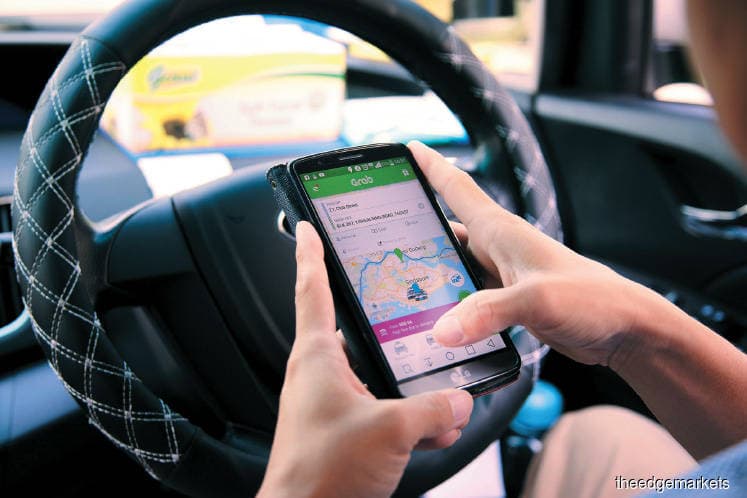
This article first appeared in The Edge Malaysia Weekly on August 7, 2017 - August 13, 2017
INNOVATION is crucial to winning in today’s fast-paced technological world where businesses are disrupted daily and customer preferences evolve every other day.
While the game has traditionally been about ride hailing, Grab has started accelerating the pace on its e-payments business.
Starting out as a taxi-hailing app, Grab’s business has evolved and is now anchored in two businesses — transport and e-payments.
The group ventured into the e-payments space last year when it introduced GrabPay Credits as well as a rewards programme for customers called GrabRewards.
Starting as a digital-payments system in January 2016, GrabPay started exclusively with credit cards and has continued to add new payment methods, including its own GrabPay Credits, a cashless top-up payment option, as well as Alipay and Mandiri e-cash. The updated version of GrabPay enables users in Southeast Asia to top up credits by making cash payments at banks or convenience stores.
GrabPay Credits has grown more than 80% month on month since its launch in December 2016.
In April, Grab announced it was acquiring Kudo — an online-to-offline (O2O ) e-commerce platform in Indonesia. Upon completion of the deal, the Kudo team and platform will be integrated with GrabPay.
Grab has committed to invest US$700 million in Indonesia over the next four years to further develop its digital economy through the promotion of technology innovation, driving technopreneurship in mobile technologies and financial services and improving access to mobile payments and financing opportunities. The Kudo acquisition is the first investment of this “Grab 4 Indonesia” 2020 master plan.
Kudo’s O2O platform enables Indonesia’s unbanked consumers to shop online by connecting them with online merchants and service providers through Kudo’s network of more than 500,000 authorised agents in 500 towns and cities across the country.
“In Southeast Asia, more than 90% of transactions are still cash-based, and more than 40% of the population remains unbanked. The opportunity to create financial inclusion for the rising [number of] middle-class consumers so that they can participate in the digital economy is massive,” says Anthony Tan, CEO and co-founder of Grab.
“Everyone should have the right to enjoy the convenience and seamless experience of cashless payments. Credits cards and traditional banking facilities need not be the only way for consumers to be plugged into the digital economy,” he adds, citing GrabPay as an example.
He says millions of people without credit cards or a banking history are already very comfortable transacting on the Grab platform.
“We can do more to solve the ‘friction’ of cash and help to bring more people into the cashless ecosystem. Our goal is to make it as easy as possible for customers to adopt and integrate GrabPay into their lives by building our localised cashless payment solutions across the region, whether that’s working with the major local banks or integrating with existing local services.
“For example, we have had great early success with our partnership with the second largest local bank, Mandiri, as well as Lippo Group in Indonesia.”
Industry observers point out that Southeast Asian startups are pivoting towards the e-payments space because of the massive potential.
Go-Jek in Indonesia is also eyeing a piece of the payments pie, together with other players ranging from banking groups to Chinese giants such as Alibaba and Tencent.
“Grab, as the dominant player in transport, facilitates nearly three million rides, or transactions, per day. Annualised, this represents one billion transactions per year. As the No 1 transport app, more people use Grab to pay every day than any other service, which makes us the best-use case for building a mobile payments platform. Cashless payments is still a relatively new market in Southeast Asia. The potential is massive and we’re well-positioned to win,” says Anthony.
The potential, industry observers say, stems from the fact that a sizeable demographic in these regional markets is unbanked — people who don’t have credit cards and bank accounts. According to a 2015 report by McKinsey, the number of unbanked people in Indonesia stood at 116 million; Vietnam, 49 million; the Philippines, 46 million; Thailand, 12 million; and Malaysia, 4 million.
Apart from the huge population, there is also the boom in mobile phone use.
Going forward, Anthony says Grab will continue to build its localised payments solutions across the region through its proprietary platforms while forging suitable partnerships to make the GrabPay ecosystem more attractive than cash.
“This means more valuable rewards for using Grab and more places you can use GrabPay. GrabPay will be the easiest, safest and most valuable way to pay, not just for transport, but also for food, retail, entertainment and many more daily transactions,” he says.
While customers today use GrabPay mainly to pay for rides, it is clear that Grab has big plans for its payment systems and is working towards that by building an ecosystem where its users will eventually use GrabPay to buy all manner of daily items.
Save by subscribing to us for your print and/or digital copy.
P/S: The Edge is also available on Apple's AppStore and Androids' Google Play.